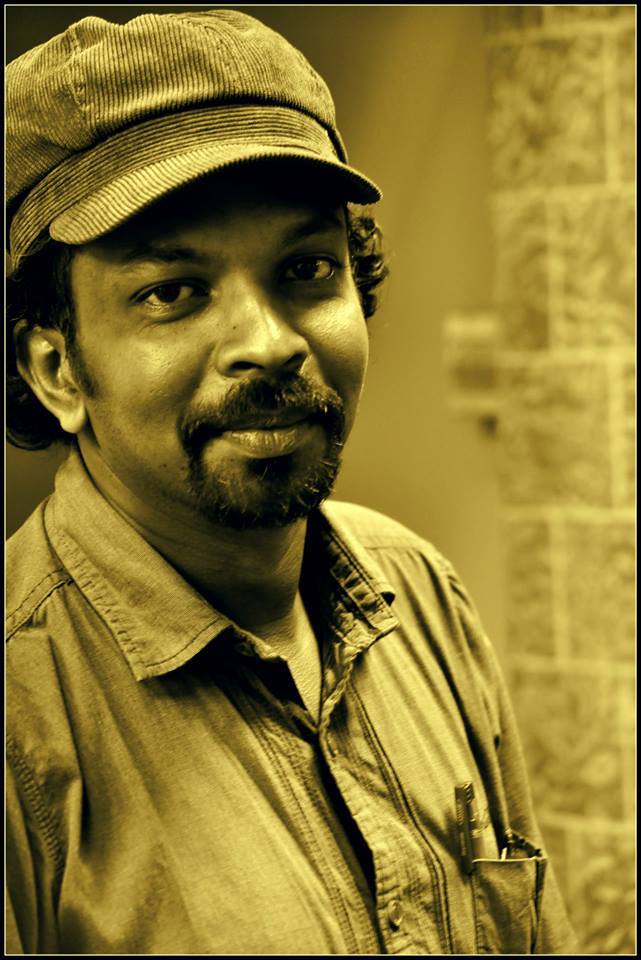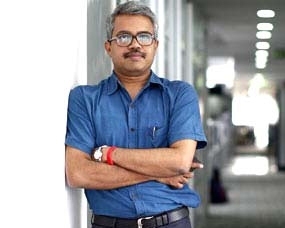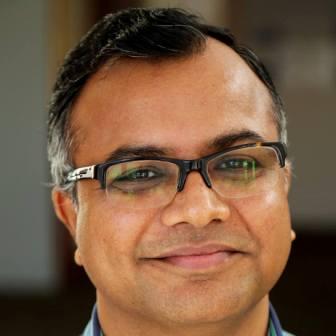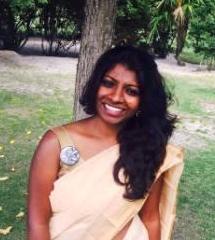Rupesh Kumar
 Sometime back my friend Ajith posed a couple of questions about my documentary “Don’t be our fathers” in his article (Dalitizing cinema : A critique of Rupesh Kumar’s ‘Don’t be our fathers‘) on Round Table India. The nature of that text by itself needs a separate analysis. But for now, I shall directly engage with my friend’s questions about the film.
Sometime back my friend Ajith posed a couple of questions about my documentary “Don’t be our fathers” in his article (Dalitizing cinema : A critique of Rupesh Kumar’s ‘Don’t be our fathers‘) on Round Table India. The nature of that text by itself needs a separate analysis. But for now, I shall directly engage with my friend’s questions about the film.
At the very outset I would like to say that I have self-identified myself as a Dalit filmmaker and that my documentaries are my continuous engagement with caste. A significant part of Ajith’s article is written with a decontextualized viewing of ‘Don’t be our fathers’, as a separate entity without some prior history. Whereas it is a sequel to my earlier film on Peringeel called ‘Underworld Memories of Untouchables’. But each documentary has to be understood in its own frame, so I will take the opportunity that Ajith presents to talk a little bit about cinema and caste and Peringeel as seen in ‘Don’t be our fathers’.
a. Filming caste
First of all, I would disagree with Ajith’s idea that capturing contemporary or modern caste through cinema is difficult. I think Ajith’s expression of “capturing modern caste” itself is a cemented statement devoid of prior dialogues and it has to be deconstructed. I shall in turn ask a question, “what is ‘capturing caste in modern cinema’?” Is this a different engagement from Dalit political points of view which include different modes of textual productions, readings and critical engagements? It appears like Ajith attempts to read these documentaries with the reference framework of mainstream film makers, which is hugely problematic. The history of denial of space and opportunity for self-representation of Dalits in cinema cannot be so easily dismissed away. The combination of constraints of time, resources as well as absence of networks together proffer exceptional challenges for filmmakers from marginalized communities, some of which I have highlighted in my previous articles on Round Table India.
For some background of my engagement with film-making: from 2007 onwards it has been my endeavor to shoot caste via documentary films. “Caste” in our films is made explicitly visible in its visual representation, its textual failures, its critical readings, its debates and so on. Caste not only anchors but also propels these films. And besides, many documentary film makers, including me, and even mainstream movies are trying to ‘show’ caste through their own interpretations. I don’t think there is a rigid and fixed notion of ‘Dalitizing cinema’ and these are all parts of ‘Dalitizing cinema’. Even reading the positive aspects of a Dalit ‘villain’ in a savarna film is a political engagement by the Dalit. There are also several critical readings done on ‘savarna films’ by Dalits, all these are also a part of this process.
In my case, we shot our documentaries with a minimum budget and from 2007 onwards we have made at least one documentary every year as a Dalit effort. For a number of reasons, including unavailability of adequate resources, we completed all of our documentaries within one week or so. From my experience it is not difficult to capture ‘modern caste’ in cinema, because a Dalit in modern times with his/movement with camera and shooting caste itself is a political act. If Ajith wishes to, this act itself can be read as ‘capturing modern caste’ even if the texts he/she produces require more political dialogues. But apparently for Ajith capturing modern caste is difficult.

Further, Ajith emphasizes caste as being ‘subtle’ in modern times. I disagree, as a Dalit and as a ‘victim’ of the modern caste system, I clearly understand the ‘caste’ in the jokes against me, in my friendships, in my campus, in my relations etc.. And I think every other Dalit would be in one way or another experiencing the same. How can Ajith read such experiences as subtle? What Ajith points to as ‘subtle’, is for the savarnas who operate untouchablity in the modern secular style. But when Ajith says caste is ‘subtle’ in the modern domain, I am afraid he is co-relating himself with this savarna space. I am sure modern caste in Kerala, more than its subtleties, has various dimensions. The struggles on land, dialogues in ‘colonies’, daily lives, the numerous violences experienced in every segment of lives produces caste atrocities. I think Ajith is drastically minimizing the complex operations, effects and perceptions of caste in contemporary times.
Regarding his observation, “I didn’t find any effective portrayal of caste in Peringeel”, here is my simple counter question: “What gave you the impression that I have taken up the burden of ‘effective portrayal of caste’?” I am very sure that Ajith was not with me during the pre and post production phases of my documentary – nowhere do I make a claim of embarking on the task of ‘effective portrayal of caste’. This is my initiative and I never had a contract with anybody to “portray caste”. After watching the documentary for so many times, if Ajith could not perceive the assertive portrayal of Dalit people in Peringeel, what can I say? I may or may not engage with the “effective portrayal of caste in Peringeel”, that is my style. But how can Ajith, a person for southern Kerala without having any experience with Peringeel, state that there is no ‘effective portrayal of caste in Peringeel’. I wonder, what is his personal experience or any other experiences of caste in Peringeel?
I strongly believe that the people of Peringeel can be shot in several other ways too besides “simply portraying caste”. Ajith, I am afraid, is again minimizing caste discussion from its diverse angles to that of its stigmatizing position. I think this is a parenting notion on the part of Ajith, which curtails the freedom of the dialogues of caste. And I strongly disagree that a Dalit documentary film maker should always come up with “effective portrayal of caste” as evidences. I think in India, Dalit text makers and film makers, can build their text or show caste, by not only “effectively portraying caste”, but also by making fun of caste, attacking caste, having dialogues on caste, making visual texts ‘killing caste” etc., etc.
Peringeel has been a discussion in the caste discourse spectrum through my documentaries from 2008 onwards. And from my documentary “Underworld memories of untouchables”, caste in Peringeel has been discussed in the international sphere with many writings and discussions. And for Ajith, all those were also ‘discussion of caste, not filming against caste’.
b. Caste in the past
Ajith’s opinion that “caste in the past is highlighted and not in the present”: in my video caste in the past is not highlighted, it is highly criticized. In “Underworld memories of untouchables” and “Don’t be our fathers”, caste in the past is highly criticized by the older generations, who also indulge in self criticism. In my grandmother Meenakshi’s interview in “Don’t be our fathers”, she says, ‘my father told the Muslim lords that I have only girls and I would send them to school”; for me this is not highlighting caste, but it is an open attack against caste by Dalits who were treated as slave workers in the field. Moreover, it was an attack by a Dalit against the caste system in a time of severe caste atrocities. And if this is read as just ‘highlighting’ caste, it is a negative understanding of a visual text created by a Dalit.
The next criticism that I want to address: “‘Don’t be our fathers’ doesn’t disturb the liberal speech of caste”.
I completely disagree. How is Ajith so sure that the documentary doesn’t disturb the ‘liberal speech of caste’? Ajith, are you a part of this ‘liberal speech of caste’ for you to state that it doesn’t disturb such an arena? From my experience, the documentary, with its title and text, has disturbed the liberal patronizing communists, the liberal savarna ‘love makers’ of Dalits, and other patronizing communities who project themselves as decision makers and problem solvers for Dalits. In the interviews of Vijay Tirur, Shyam Krishnan and me, we took on the patronizing liberal characters and I read it (the exchange) as different assertions against such liberal attitudes on caste. These funny, satirical and strong attacks on ‘liberal seculars’ and savarnas offer a great understanding of their caste operations through education. The attacks also serve as a kick delivered to liberal secular casteism and as a radical way of dealing with caste.

Regarding the comments on the technical aspects and their implications, Ajith points out that when the modern generation plays cricket I rendered them with fast cuts, whereas the older generation were gazed through a slow anthropological look. I would say, please look carefully at the Bapputty scene (an older generation individual): he is moving with a cow and says that we are the lords, and live by our hard work, and I assume that the scene is not a slow cut, but a very fast one. And in Meenakshi’s, Balan’s, Bapputty’s and Karunakaran’s speeches, rather than dwelling on caste atrocities, they are heard analyzing how caste functions in their life. Karunakaran analyzed how the feudal and political leadership behaved as patrons. Meenakshi talks of her father’s strong reaction: “I would educate my girls”. Balan echoes Buddha’s quote that ‘one who tries to save you cannot save himself‘. These are obviously strong analyses of caste by people of the older generation. Cricket may not be their game but they are expert analysts of caste, and their assertions provide emancipatory tools for the Dalit viewers and the marginalized anywhere. I would like to share one particular experience after a screening of “Don’t be our fathers” – it is about Balan, a farmer. In the documentary, he gives a comparative analysis of caste between the modern and olden times by quoting Buddha. A viewer asked me: “Is he a college professor?”
I am surprised and bemused that Ajith keeps missing the self-confidence and powerful assertions of the Peringeel residents as they go about their daily routines. For instance, the man demonstrating crab-fishing; his cool expertise as he educates us about his craft, with humor, style and optimism; the women talking about their very unique ecosystem and its life-sustaining features. This, to me, signifies a tremendous sense of self-confidence in their work and life. I also wonder if there is a text or a book, scientific or otherwise, which talks about the qualities of the Indian eel. In this documentary we hear about it from women experts. Unique ecological habitats such as Peringeel are repositories of unique forms of knowledge; my documentary gives a few glimpses into this.
c. The idea of patronization and the agency of Peringeel
Yes, ‘Don’t be our fathers’ is a political statement against all sorts of patronization even those that operate within the Dalits themselves. Sometimes it may be a utopian idea, but it is an unambiguous reaction against patrons and patronage. Patronization occurs at different levels and in different spectra, it’s not a single grand narrative. Patronization is sometimes an approach, sometimes a discourse, and sometimes the very system. We are not creating a single weapon for all sorts of patronization. It is meant to provide the vocabulary and analytical tools for the marginalized to decipher, describe and reject patronage in their own milieus.
As I said in the interview in Round Table India with Sruthi Herbert, I intended to ‘blow the lid off this patronage’. And I strongly disagree that my film depicts Peringeel with a character of victimhood. It simply makes the point that we need to show the celebration and assertions of Peringeel with all sorts of political character denying victim-hood.
d. Anthropological gaze
It is a funny and even a patronizing statement when Ajith says: “they are just laborers” in my video. I have a question for Ajith: how come you read laborers as “they are just laborers”? We made a 30 minute documentary and treated it as a ‘cinematic capsule’. We obviously couldn’t include everything to ‘teach’ people the different dimensions of these laborers. These laborers come with different talents and struggles. But here we have shown the celebration of these laborers and we learned, talked and interacted with such intellectual forces. We use low angle shots for the fisher woman to receive her knowledge and assertions. I wonder how Ajith can read them as simply ‘laborers’. And when he reads it as a ‘government documentary’, it is funny and I am left wondering whether Ajith is not familiar with the various documentary styles. He appears to approach new Dalit assertions in political documentary film making with limited appreciation of documentary making. I feel it is really difficult that we need to talk to even people like Ajith about how this is a stylish text different from pathetic government documentary texts.
e. ‘Cultureless’
In my interview, talking about those who come to patronize us, I used the term “cultureless” against their patronizing casteist attitude. The scorn we feel for such attitude was being conveyed. For the time being I cannot invent new words. And it should be more irritating for the brahmanical types: to hear ‘cultureless’, a word coined by themselves and being used against them. Inversion is not an unknown concept, is it?
f. Dalit Land
I termed the land (Peringeel) as a Dalit land to consciously break the concept of ‘Dalit colony’. We don’t treat this land as a colony, and the people of Peringeel have many different interpretations of this land. In Peringeel it was the Muslim lords who ruled here. They raped the women and denied education. In our video, through Meenakshi’s interview, we bring to light the women’s oppression under the Muslim lords who historically tortured Dalit lives. And when we trace the history of Dalits in Malabar, we have to go through the atrocities of Muslim casteist lords against Dalits. This is historically explained in books like “Ente Kadha” by Kallen Pokkudan.
g. Confronting the local
The lines in our music video state that we grabbed education and jobs. This is a statement of Peringeel’s aspirations. And as Ajith says, people like my father Karunakaran and me who spoke in the documentary are the people who went out in search of opportunities. I did think of showing my visuals first in Malaysia. But I stuck to Peringeel because we believed Peringeel was our first audience and their appreciation was most important. Even if we are educated, we are back here, learning about history, documenting it and sharing it with the rest of world. And this documentary, I feel, is a payback to the society of Peringeel.

If you can’t see the educated people in Peringeel speak for Peringeel in appreciation of all that it means to them, I think, your reading has got some problems. I fail to understand how this ‘local’ becomes a closed space. A person from Peringeel making a documentary with the camera- products of modernity, and using those tools to represent his local to the international space: how is that marginalization?
h. Where are the Dalit women?
Nine families in all make up the population of Peringeel. Some members live and work here; others live here but work elsewhere as is true of any given place. The woman who does prawn fishing and talks about the “Indian eel” is a Dalit woman. Meenakshi, who talks about women’s education is a Dalit woman. Regarding Ajith’s dismay that the documentary has not included any young, modern Dalit women, there were two women at the time of our shooting at Peringeel. One was a new mother of a baby girl; she was convalescing from childbirth and understandably had no time or inclination to talk in front of the camera. The other was a woman who worked in the canteen in Pariyaram medical college. We waited for her for two or three days but she remained busy and could not make time for the documentary. And that’s why we couldn’t have them in the film. The imagined exclusion of young Dalit women (as Ajith sees it) has little to with the reality of Peringeel and the way this documentary was made. I would also suggest to Ajith to read my article on Sabitha, where I dwell on the inescapable nature of the male gaze and the influence of location of the director to get an idea of my evolving engagement with gender, caste, ethnicity and documentary film making.
i. Dialogue is possible
The funny/comical and satirical comments in the documentary itself are a form of dialogue. Is it impossible to digest that the oppressed laughs at the oppressor? The casteist spectrum always makes fun of Dalits with high visibility. Here you see the reversal. Why assume that the resilient humor of the oppressed is automatically a closure for dialogue? Let us also make fun, let them see themselves being made fun of. I am not against democratization of any public space. But democracy should not be in a single grand narrative style. It should have elements of fun, disagreement, comedy, etc., etc.,
j. Critique of the left
This documentary is a sequel to my other documentary “Underworld memories of untouchables”. If Ajith had watched that documentary, he would know it has explicit communist criticism, locating the casteist basis of how communism operates in Kannur. I would like to emphasize that a caste critique in cinema is not only against communists even though they are the major part of the opposition. In this documentary when somebody says “I got sense”, it is an amused satirical take on the communists’ patronization. Ajith’s interpretation that this implies Dalits ‘didn’t have sense’ (earlier) is simplistic. He misses the satire by several yards.
Lastly, I’d like to quote my friend Gee Ameena’s comment: ‘..take these comments as like when Buddha got nirvana! Finally, I want to disagree with Ajith on the point that we need to support everything in a documentary with plain facts. Then I think I need to write a 200 page book than making a documentary. The point of a visual text is lost’.
~~~
Rupesh Kumar is a documentary film maker; please read his articles here.










